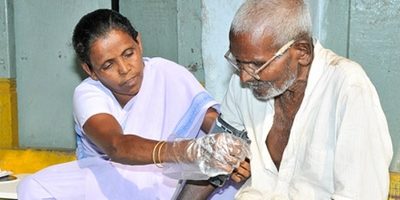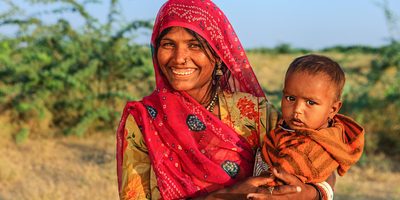
Report shows adolescent girls aged 15-17 years had the poorest outcomes in relation to UHC in India
Countdown to 2030 (CD2030) recently published its first report on ‘Tracking progress towards universal coverage for women’s, children’s and adolescents’ health'. Dr Devaki Nambiar, Program Head for Health Systems & Equity, The George Institute for Global Health India, is part of the Equity Thematic Working Group for CD2030 and co-authored a section of the report, ‘Health Equity is paramount to achieving Universal Health Coverage’ (pages 43-51).
The section analyses health inequalities within countries through a composite coverage index, to track progress of universal health coverage across subgroups like rural-urban, woman’s age, woman’s education and wealth index for various countries.
Based on data from the 2005 National Family Health Survey in India, women in the age group of 15-17 years across rural-urban and wealth subgroups, had the poorest outcomes in relation to universal health coverage in the country, with a score of 35.6%. This is even lower than the health coverage for the 1/5th poorest population in India, which scored 39%.
Composite coverage index for women in age group of 18-19 years was 41.8% while that for women in the age group of 20-49 years was 56.6% in India.
Data also shows huge disparity in health coverage for women based on their level of education. Women with no education scored a composite coverage index of 44.4%, while women with secondary education or more scored a composite coverage index of 68.7%
- Download the full report: Tracking progress towards universal coverage for women’s, children’s and adolescents’ health (PDF 17 MB)
- Or, read the results and finding in an article published in The Lancet
Reflecting on the findings, Dr. Nambiar pointed out that with the latest National Family Health Survey out, there is a need to re-analyse and examine trend data with respect to the health of adolescent girls. Emphasizing the importance of social determinants of health (SDH), a subject on which she has co-edited a recent volume, she says,
“There needs to be much greater emphasis on adolescent girls, using a life course and SDH perspective -from education to menstrual hygiene, livelihood to reproductive health and rights, freedom from violence to nutrition and healthy lifestyles. The order is tall, but there are committed organisations working in this space. We must now come together.”
About Countdown to 2030
CD2030 is a multi-institutional partnership initiative aimed to accelerate the momentum to achieve the targets of the Sustainable Development Goals (SDGs) for ending preventable maternal, newborn, and child deaths; and catalyse efforts to achieve the vision of the Global Strategy for Women’s, Children’s and Adolescents’ Health.
Our work on Women’s Health & Health Equity
Women’s Health & Health Equity is a high priority programme at The George Institute for Global Health.
- Read about our latest project on Women’s Health: SMARTHealth Pregnancy in rural India
On August 10, 2017, The George Institute hosted a round-table on Future of women’s Health focussing on role of data and research to shape policy. Several stakeholders stressed the need for a more detailed breakdown of data by gender to help unpack the construct of gender which goes beyond women’s marital roles.
- Download The Future of Women's Health: Using Data and Research to Shape Policy report (PDF 960KB)
The George Institute also exercises a strong focus on promoting women in research, academics and public health backgrounds both internally and in the global dialogue.
How can you help?
The World Economic Forum's 2017 Global Gender Gap Report says that gender parity is over 217 years away and with International Women’s Day approaching on March 8th, there is a need for collective action to #PressforProgress for #GenderEquity.
Join the discussion on Twitter @GeorgeInstIN to help progress #Health4All and #HealthEquity through and watch this space for upcoming round-table discussions to be hosted by The George Institute on Women’s health and Universal Health Coverage in India.




